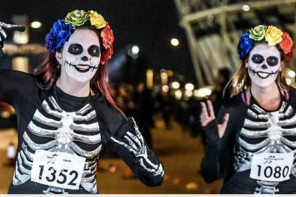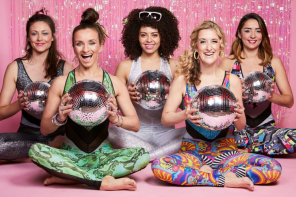You just need to look around when you set foot in the gym and one thing is immediately obvious. The personal trainers are most likely to be men. Figures from the Register of Exercise Professionals (REPs) show only 35% of personal trainers are women. So why don’t more women decide to become qualified personal trainers?
Time and cost
Yes, practical barriers are an issue for men and women but gender roles mean that women are more likely to have other things competing for their time and money. Qualification providers are helping with more flexible options – offering full time, part time, offline and on-line courses in a number of different locations as well as different ways to pay.
I work, I blog, I freelance and now at weekends I trek to Guildford for an 8.30am kick off for two solid days of tutor time. It’s hard fitting it all in but the part time option, tutor support by email and a bit of help from my classmates makes it doable. I’ve been really lucky because Premier Training have given me the chance to do it for free but there are a number of different funding options which your training provider can help you work out if cost is a barrier.
The fear of being judged
I was scared of being judged before I signed up. Judged for not being fast enough, for not being strong enough, for not being thin enough and for not having a body that clients would aspire to. I’ve run marathons, I’ve cycled the whole of Scotland, I can chin my own body weight and I can beat the boys at push ups but I still felt like a personal training qualification wasn’t for me. My fears were put to rest on day one when the first thing I found out was that everyone was feeling the same, the boys included.
Sport England’s This Girl Can research also shows that elite sportswomen are seen as off-putting and unattainable. Women want trainers who are ‘like them’. We need a bigger and more diverse female workforce – we need more women with different body types, different goals and different backgrounds to reflect the women who want to be more active. So we need to stop worrying about not being right for the job!
It’s not normal to be a woman in sport
The gender gap in sport isn’t limited to personal trainers. It’s sport wide:
- Two million fewer women than men participate in sport and exercise once a week
- Women make up only 18% of qualified coaches and 9% of senior coaches
- For almost half (49%) of publicly funded national governing bodies less than a quarter of their Board are women
- Only 7% of all sports coverage is of women’s sport, dropping to 2% of newspaper coverage
- Only 0.4% of all commercial investment into sport is into women’s sport
We need more women participating in sport, more women working in sport at every level, more coverage of women’s sport and more commercial investment into women’s sport in order to normalise women’s place in sport and more in turn personal training.
How do you become a personal trainer?
To become a personal trainer need to have a recognised Level 2 qualification before completing a Level 3 Diploma in Personal Training.
I’m currently doing the part time Diploma in Fitness Instructing and Personal Training with Premier Training International.
If you have a question on how to become a personal trainer drop me an email here: emma@lungesandlycra.co.uk




